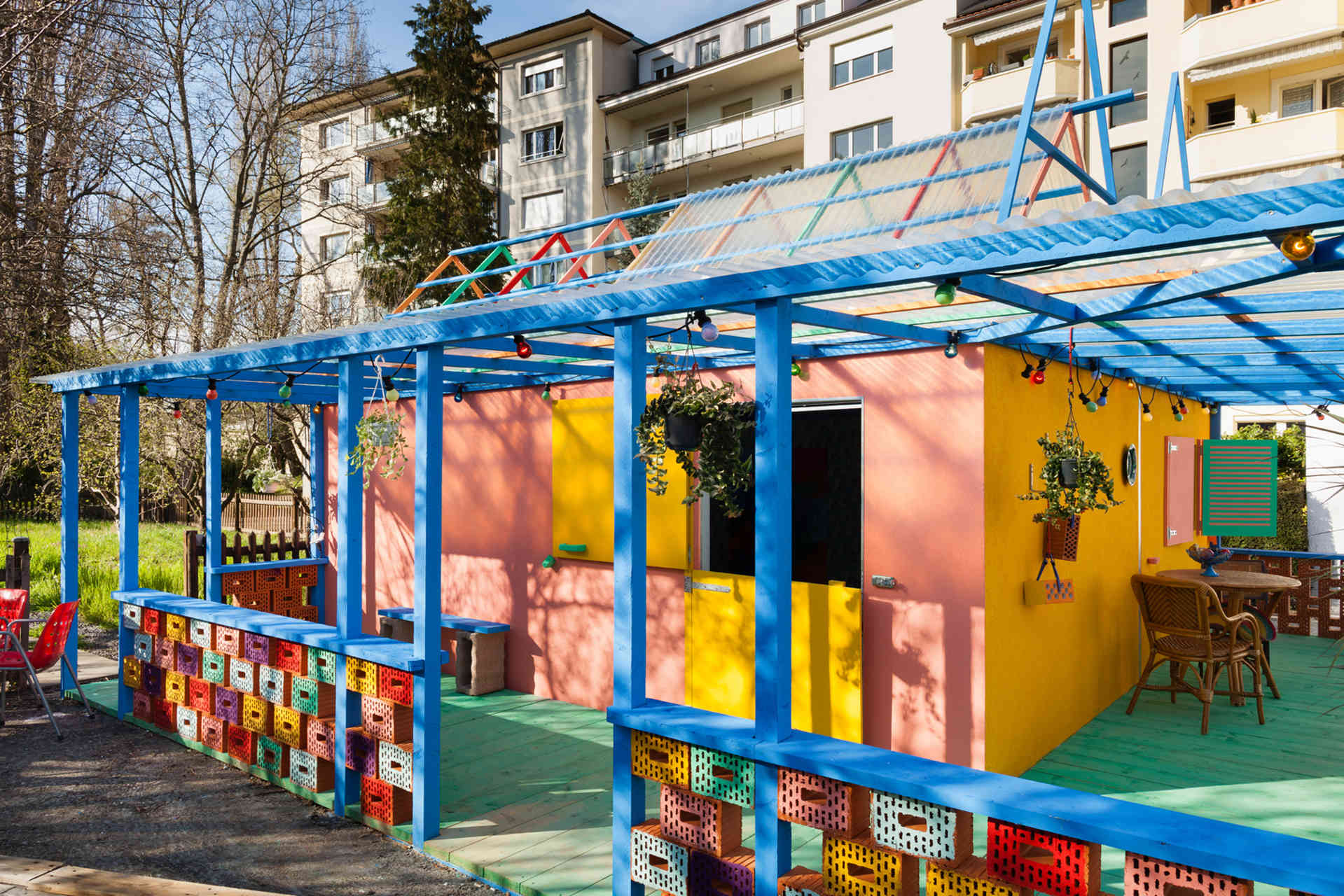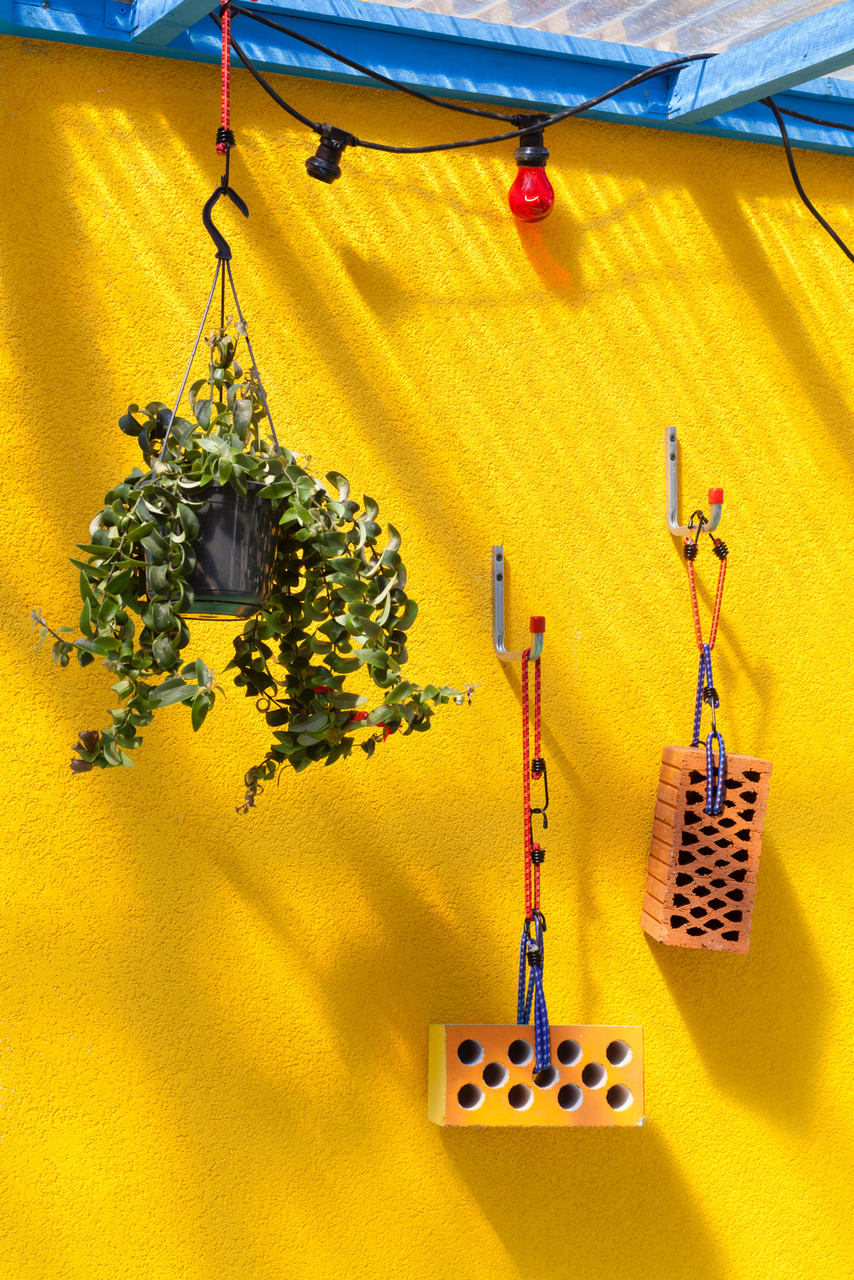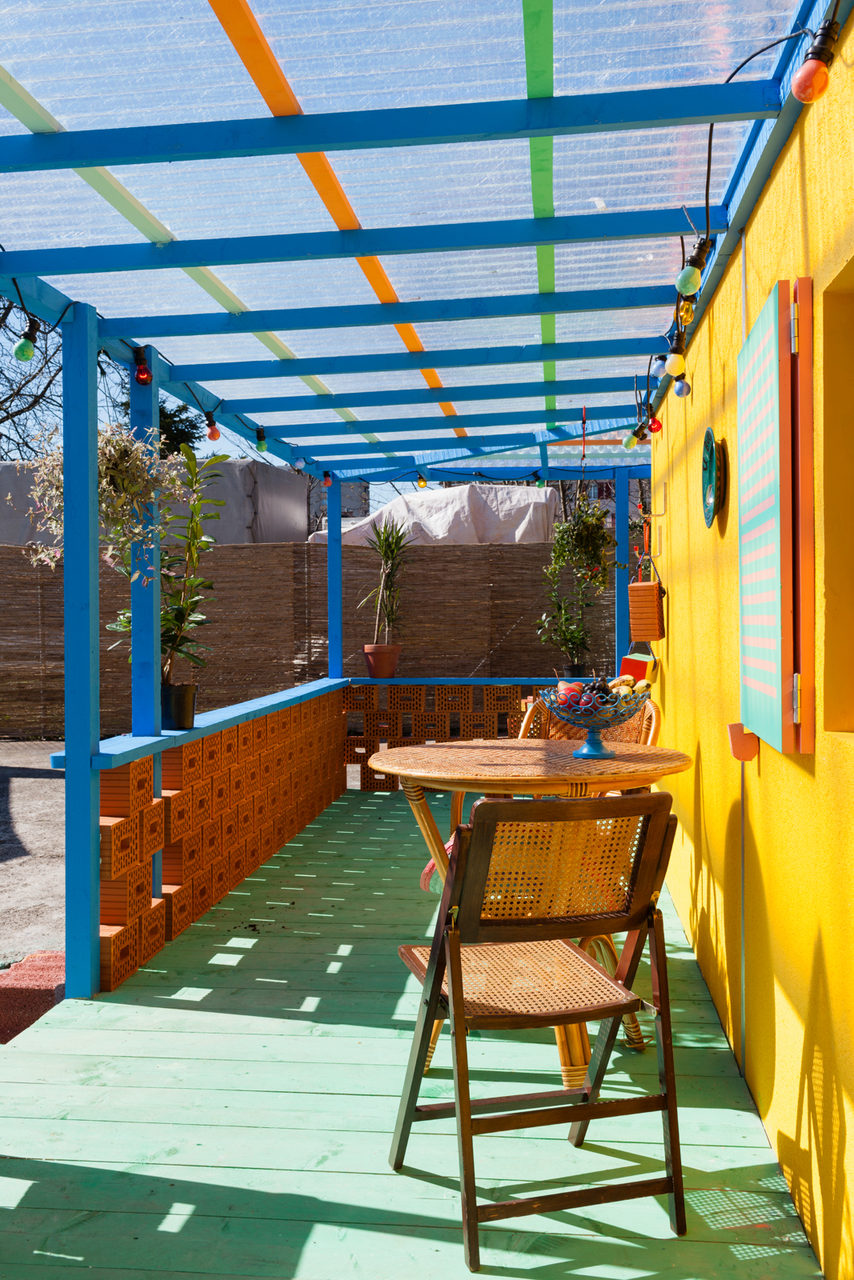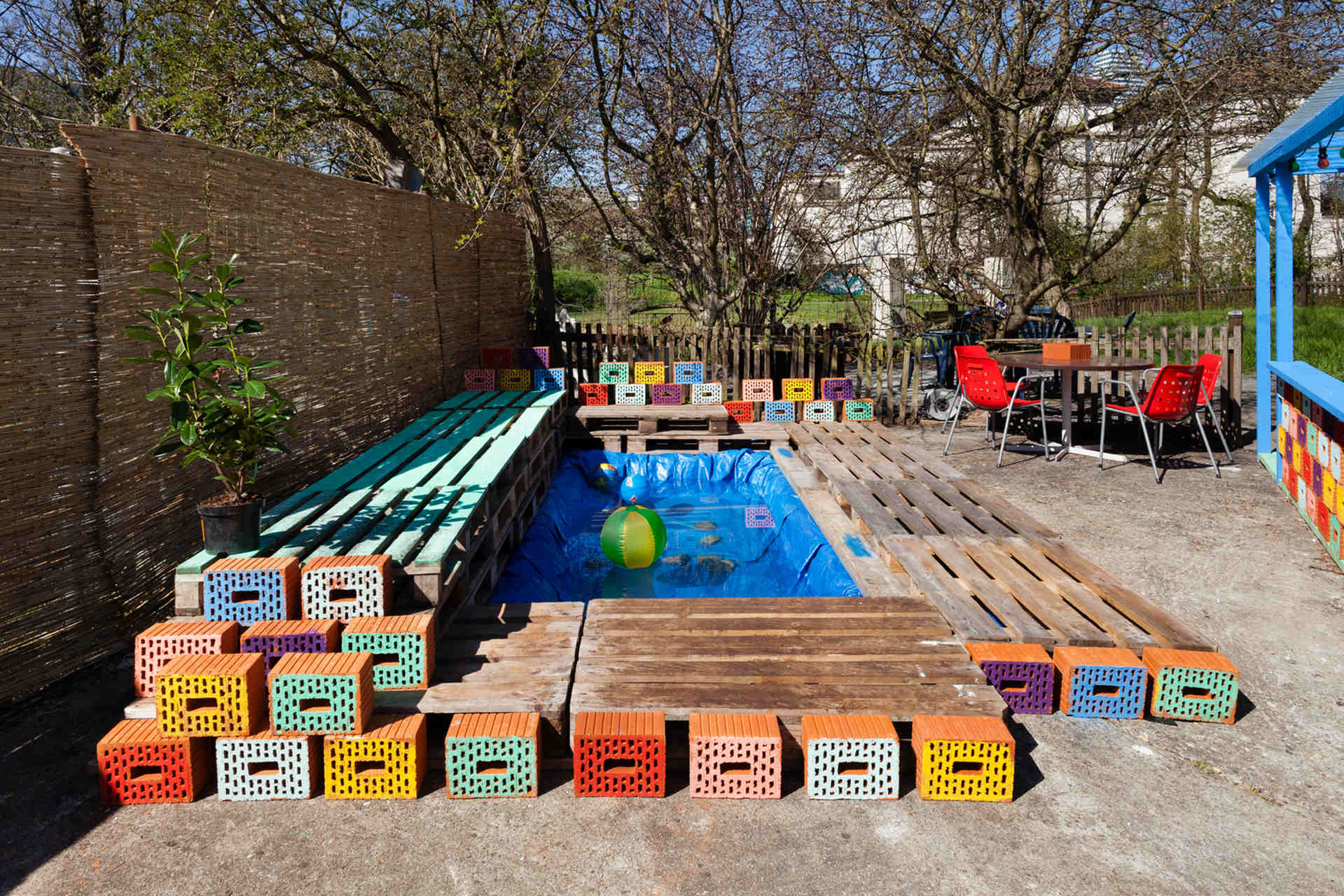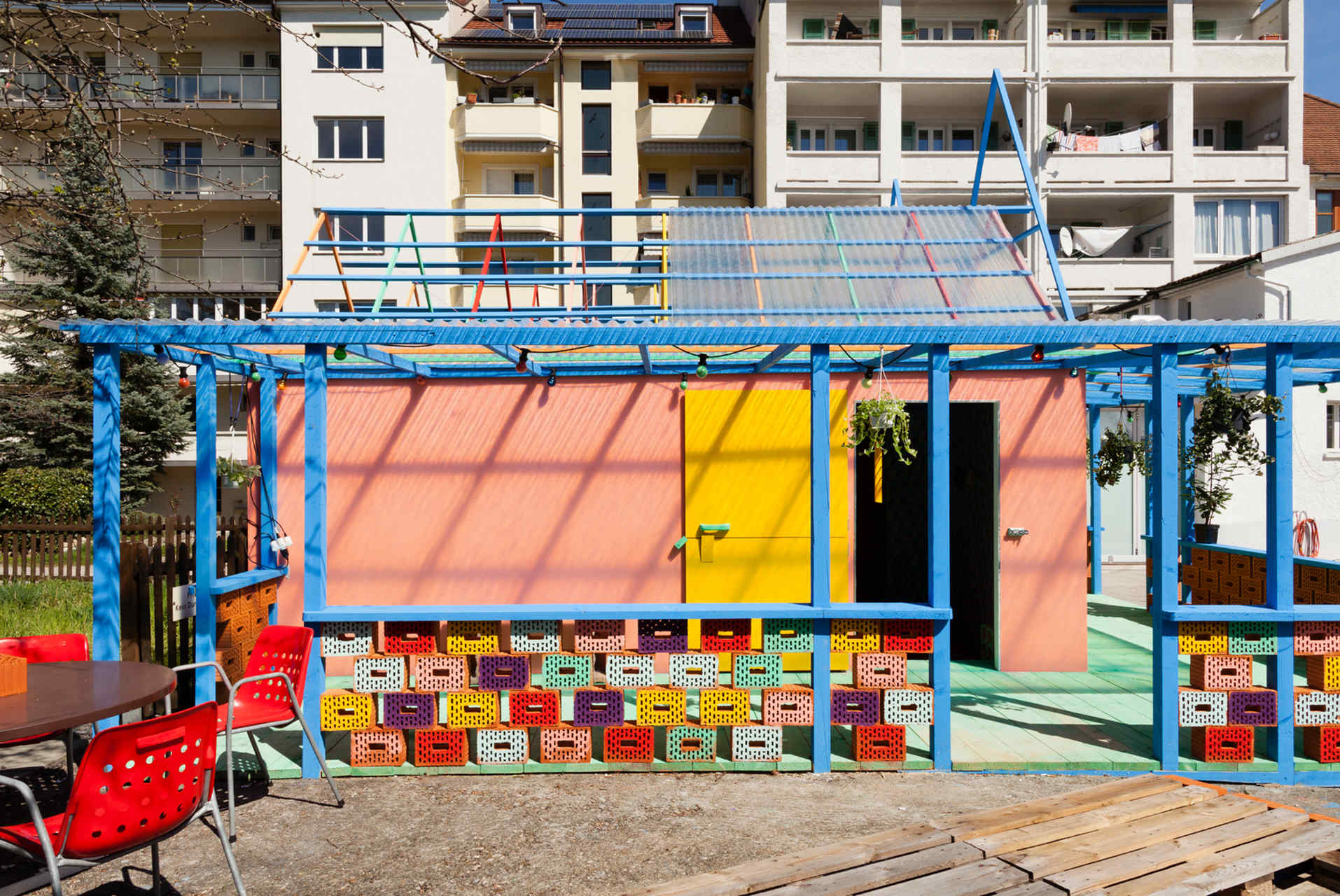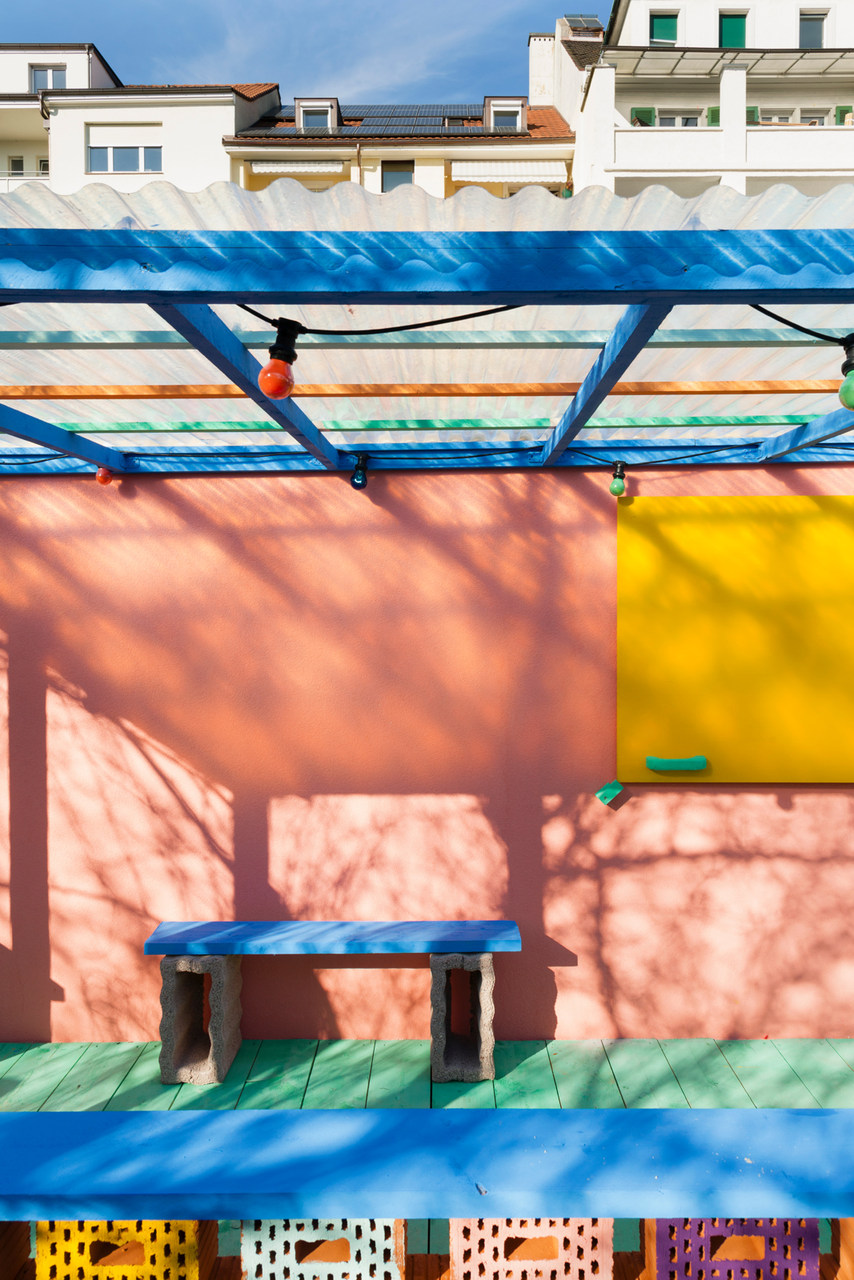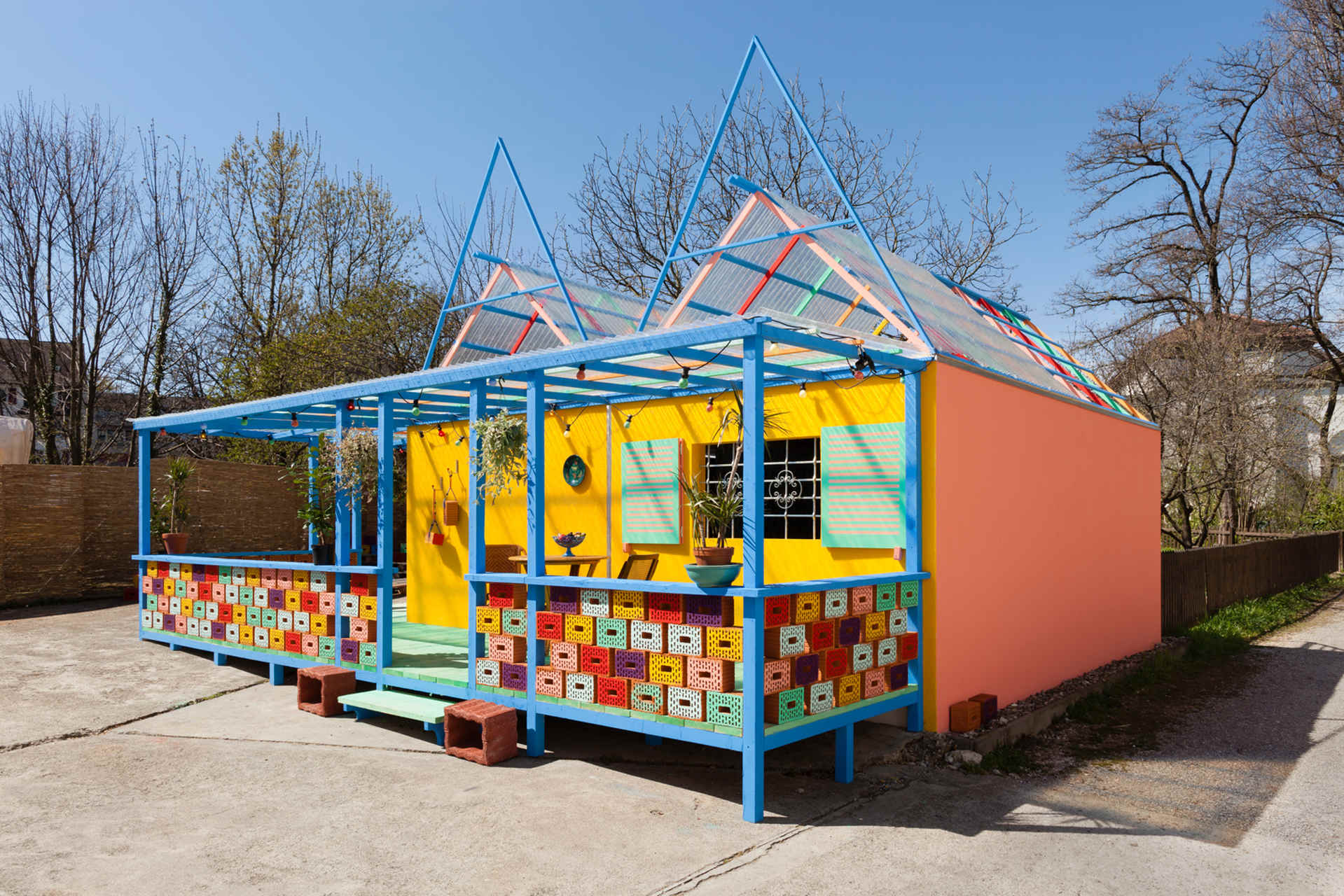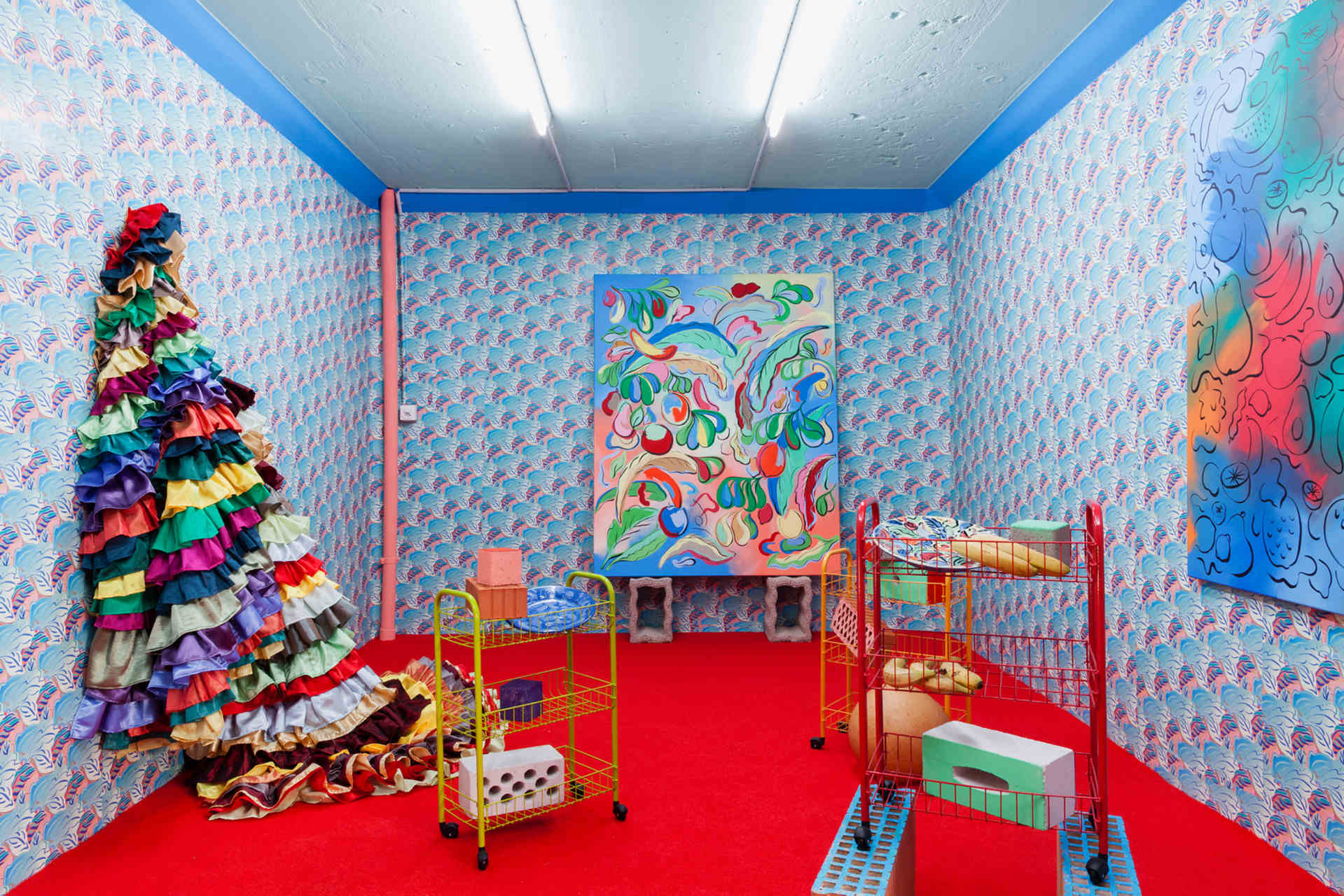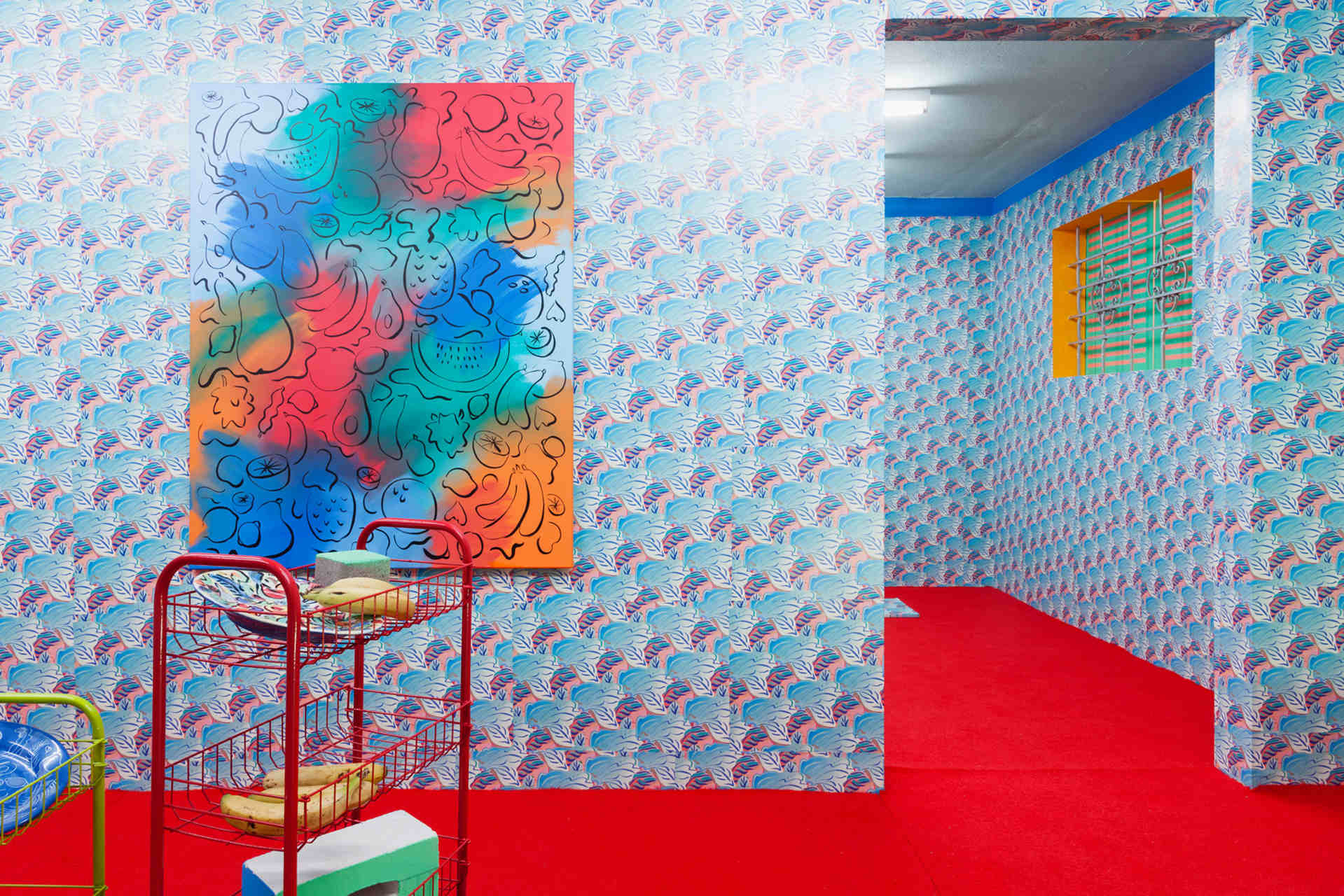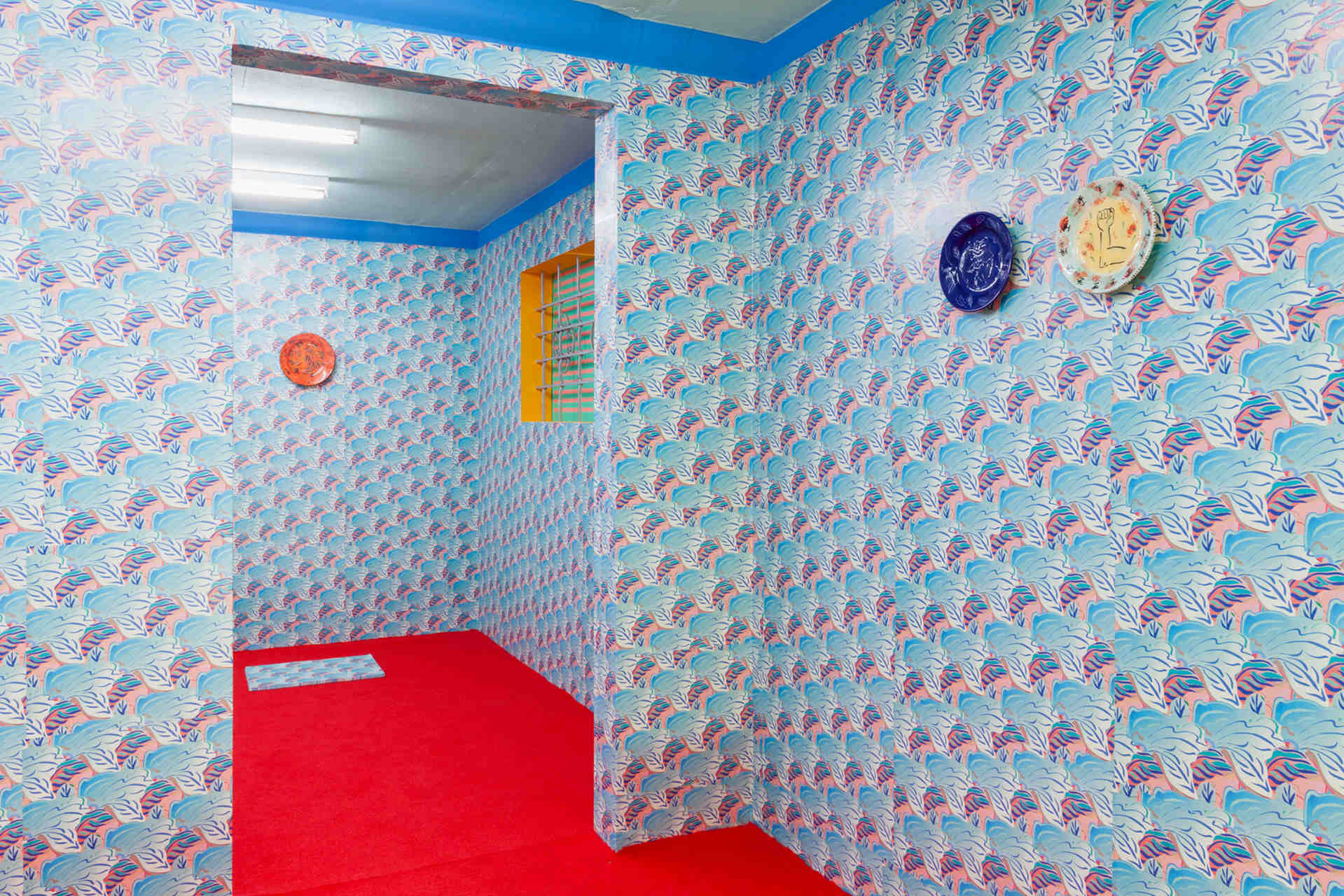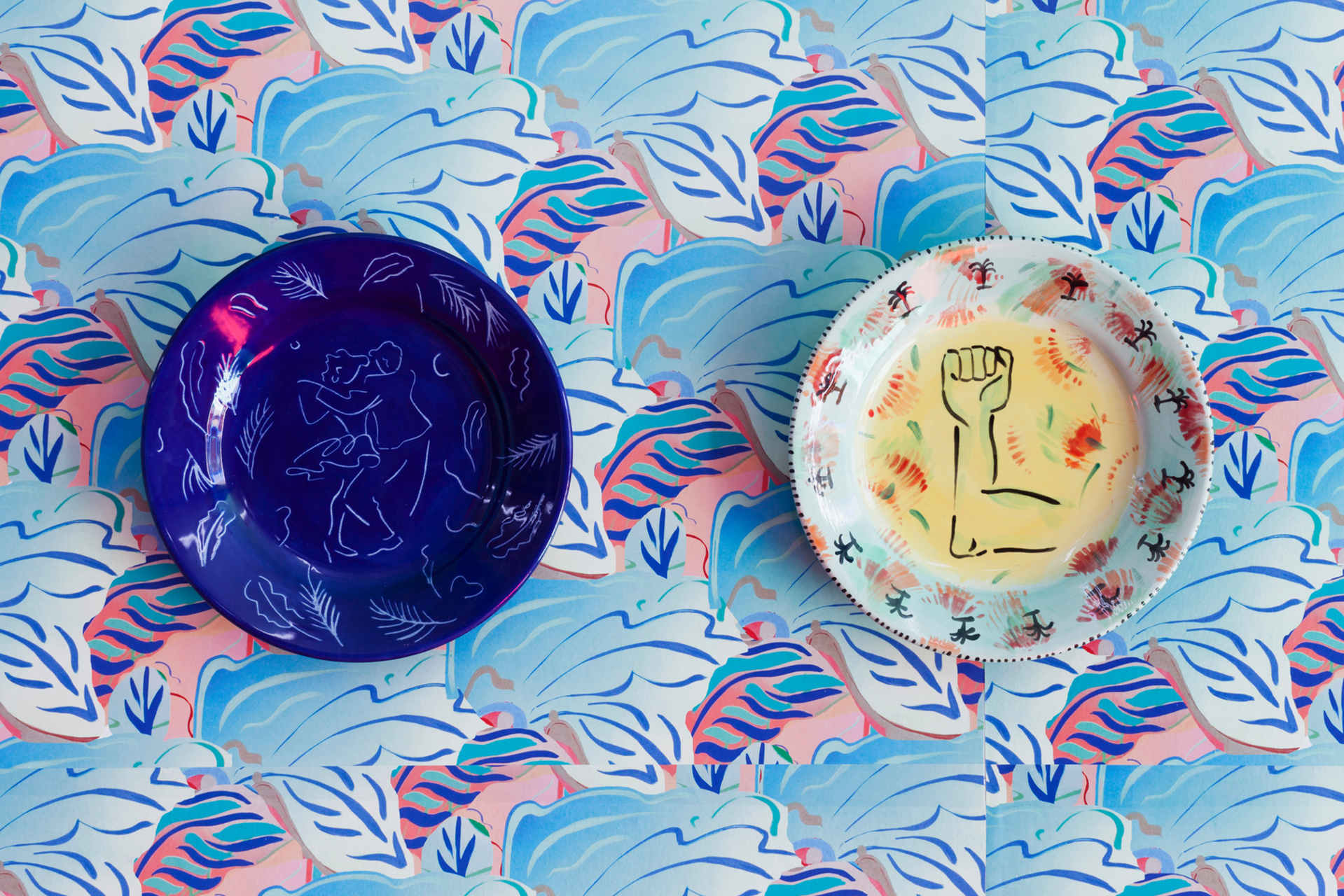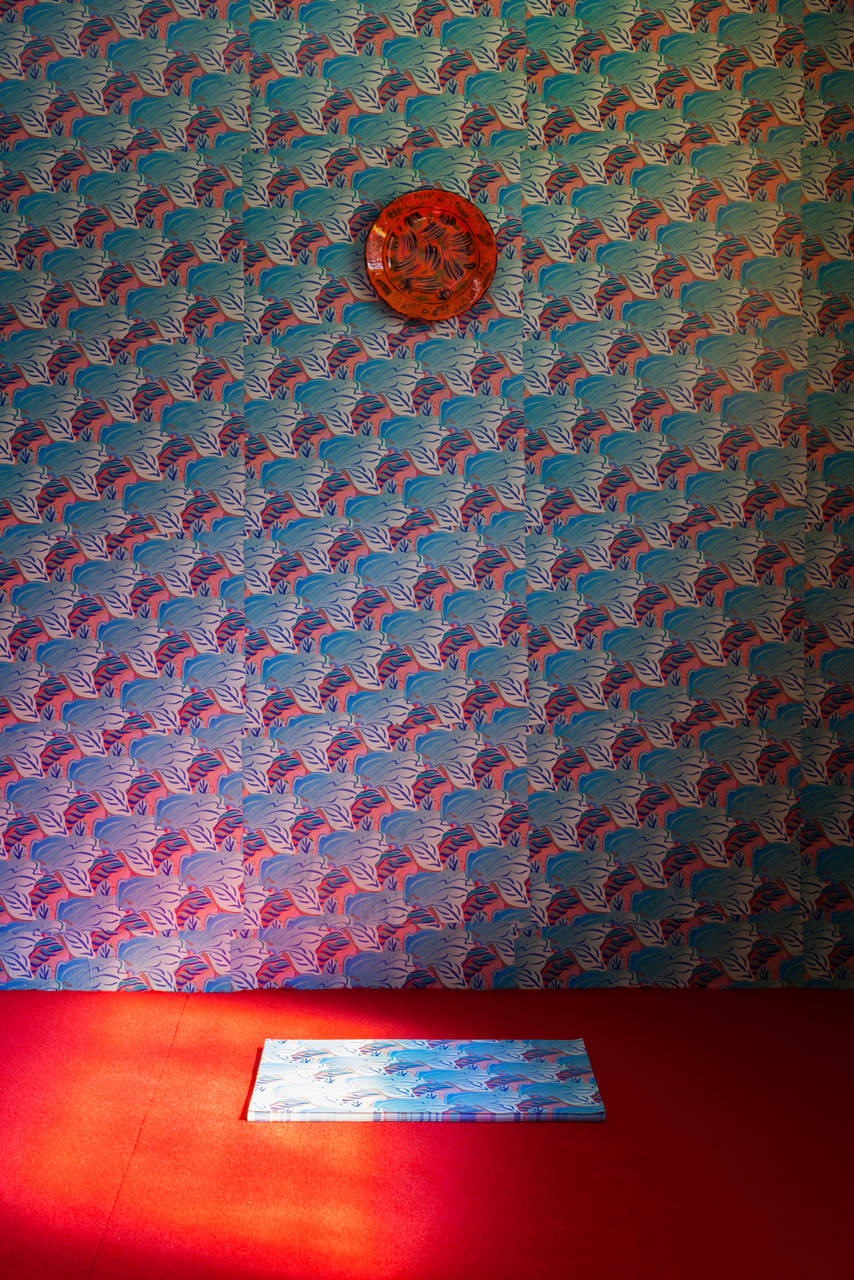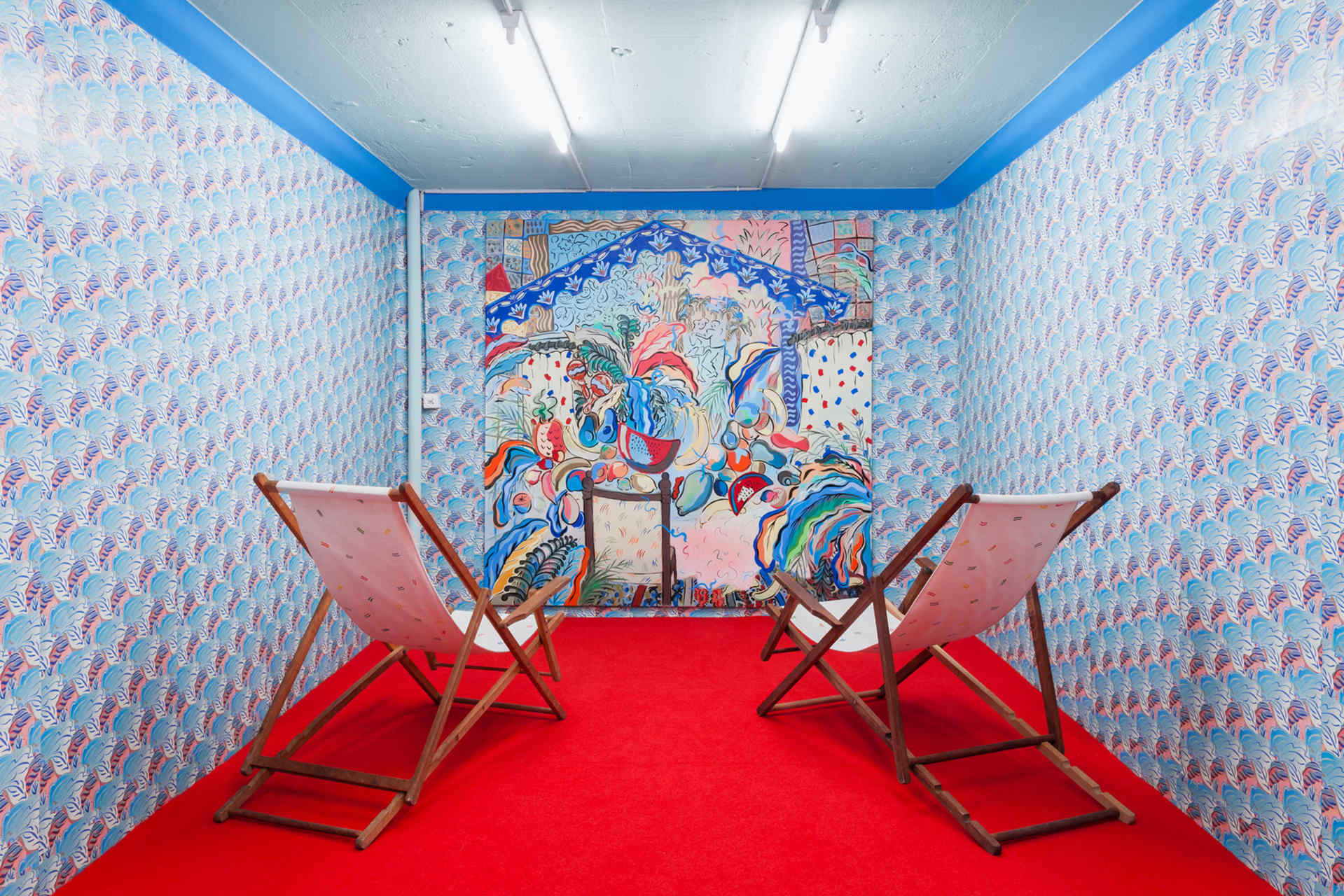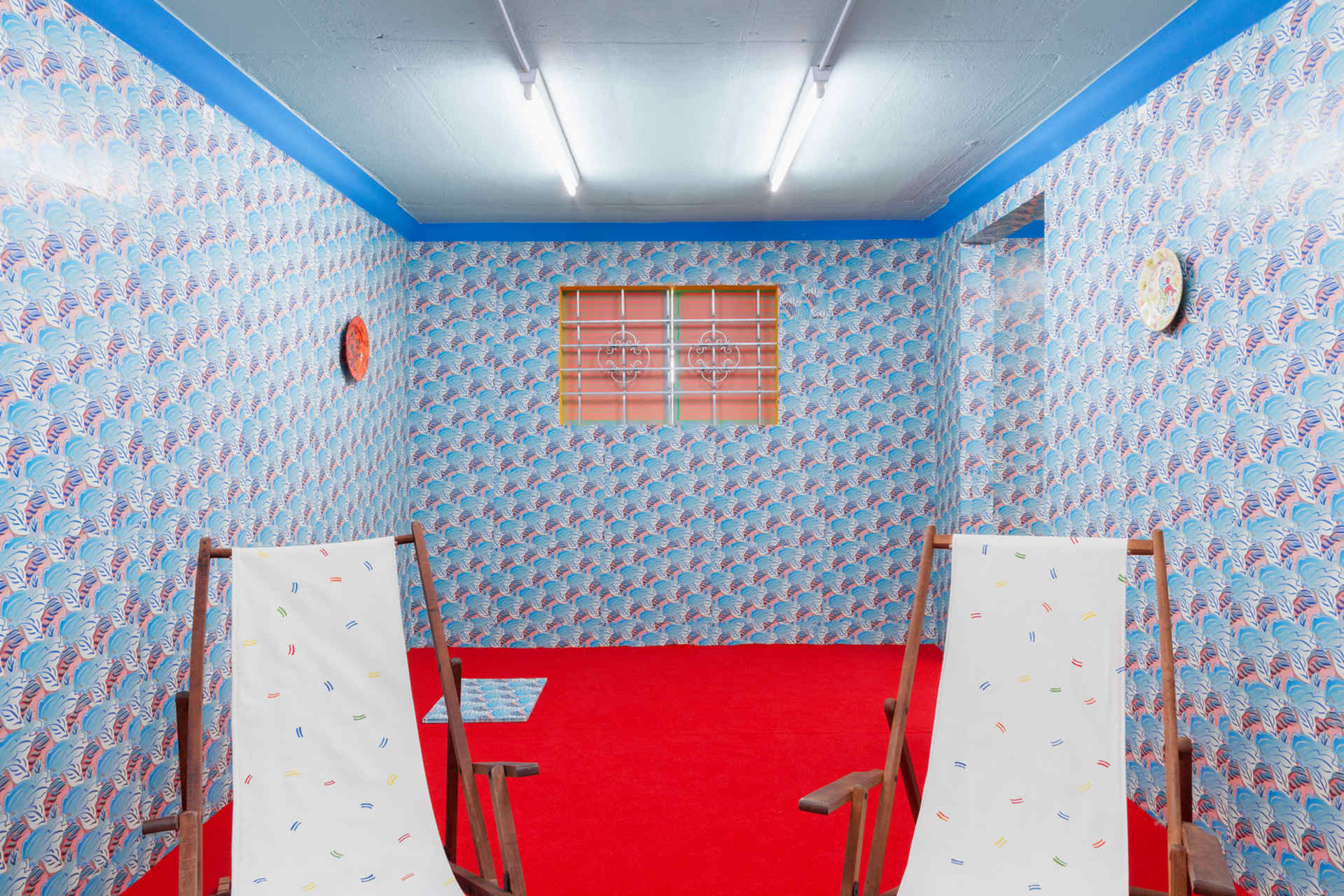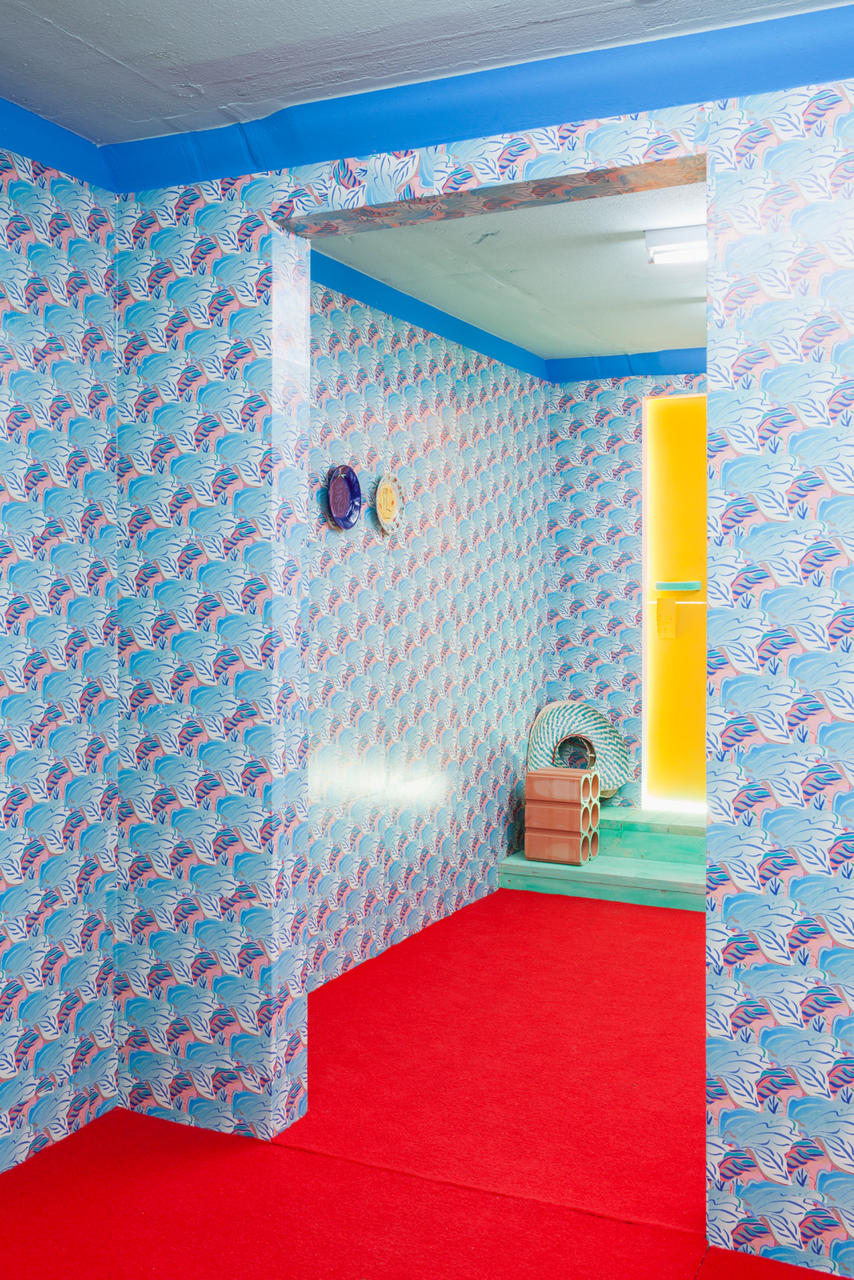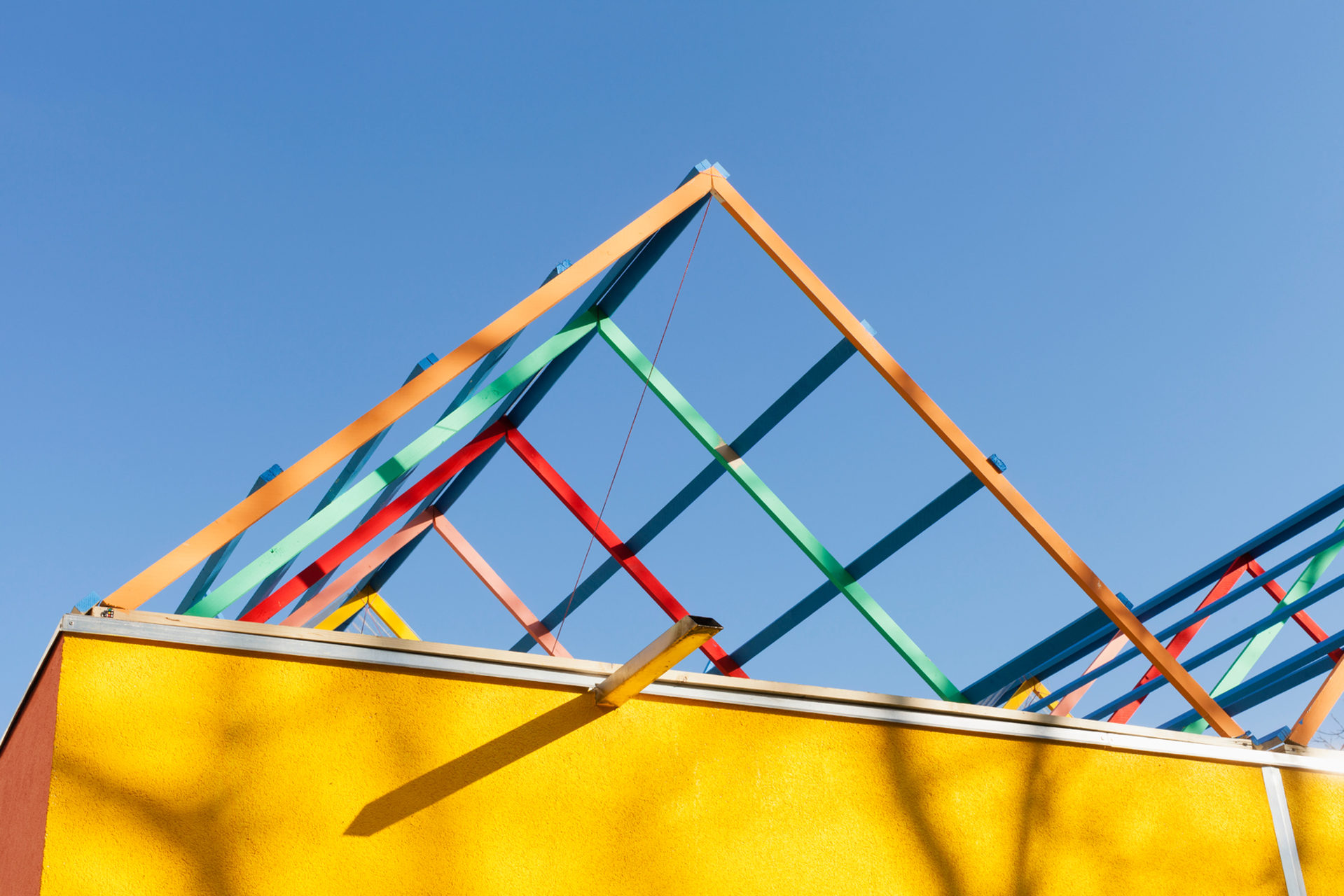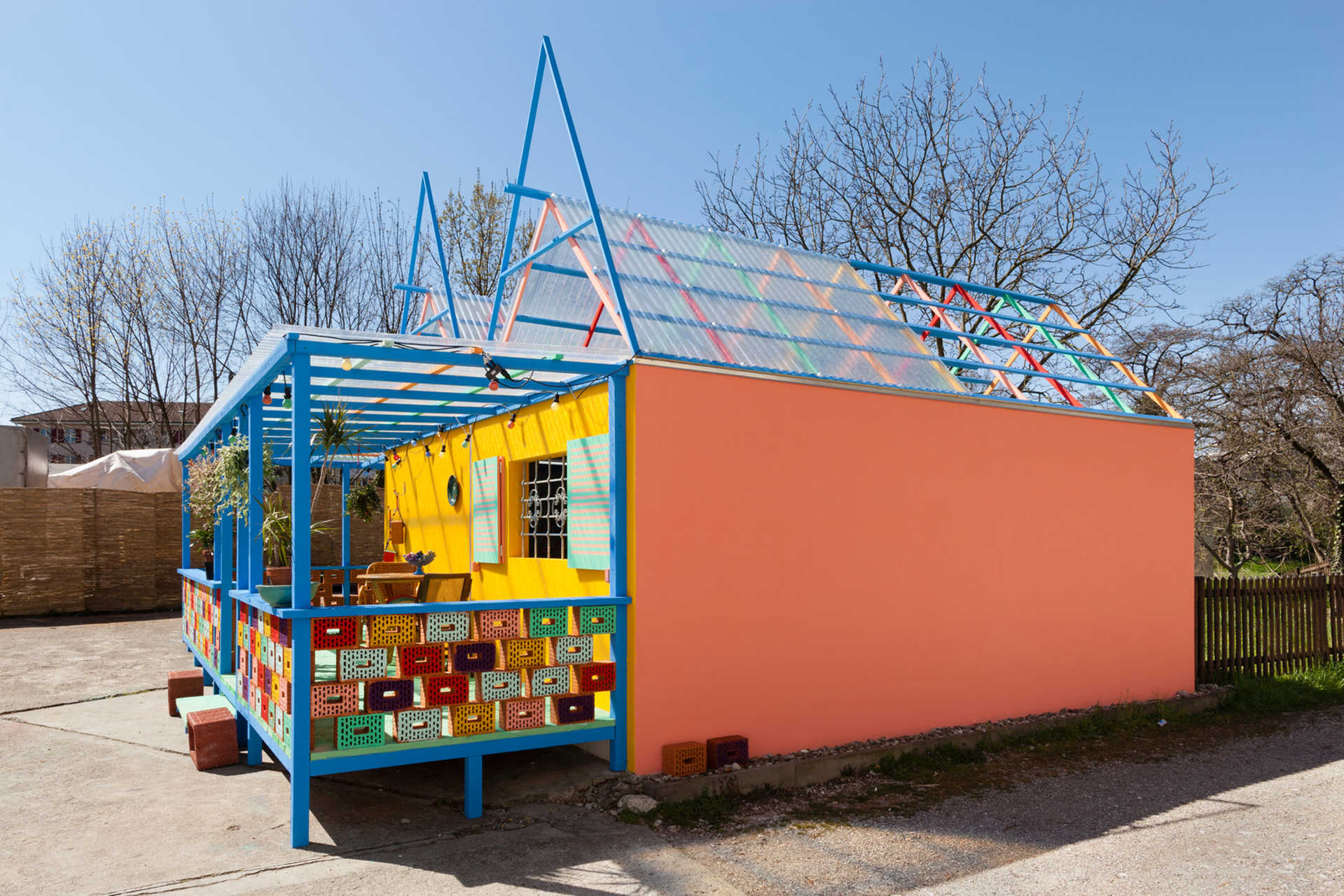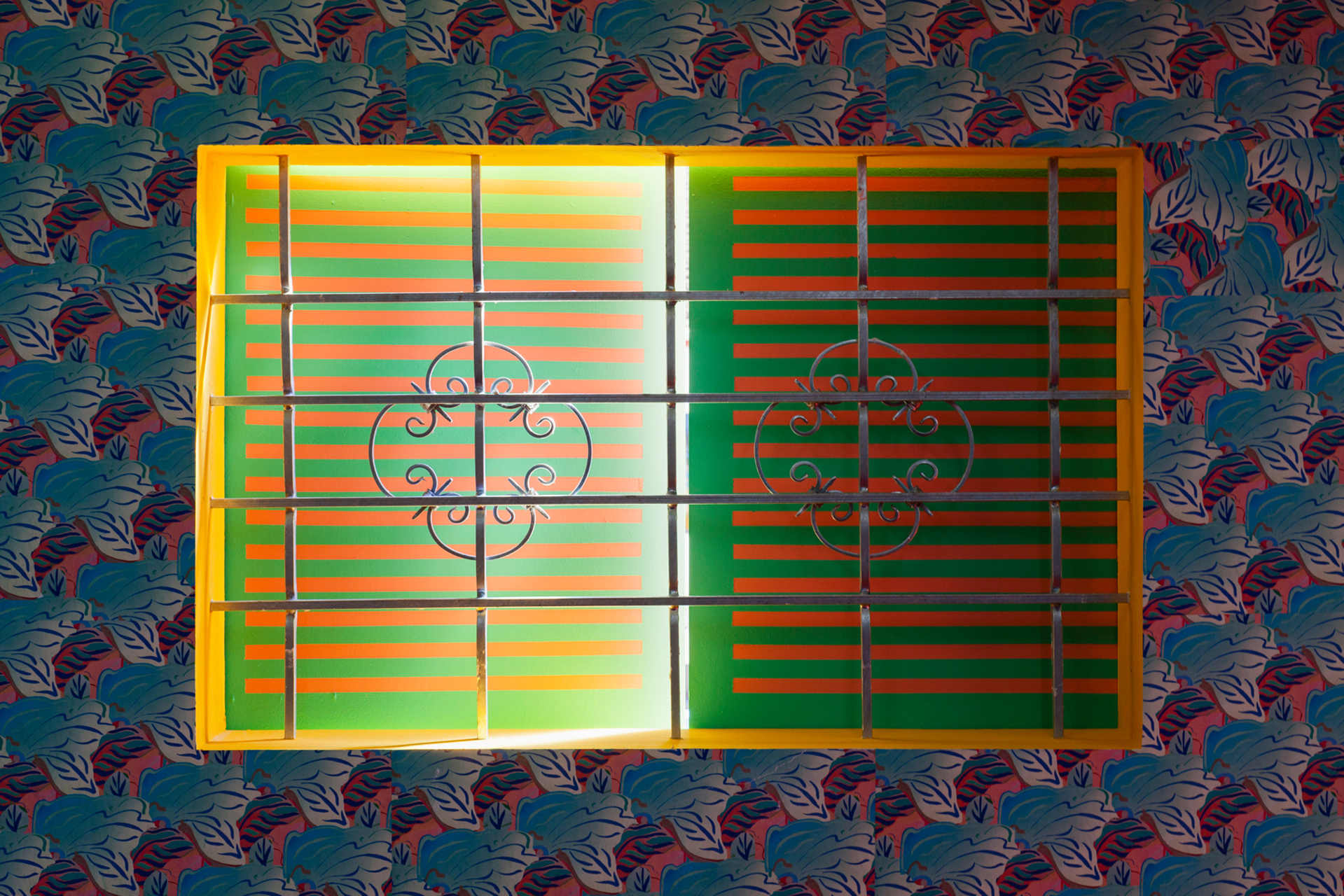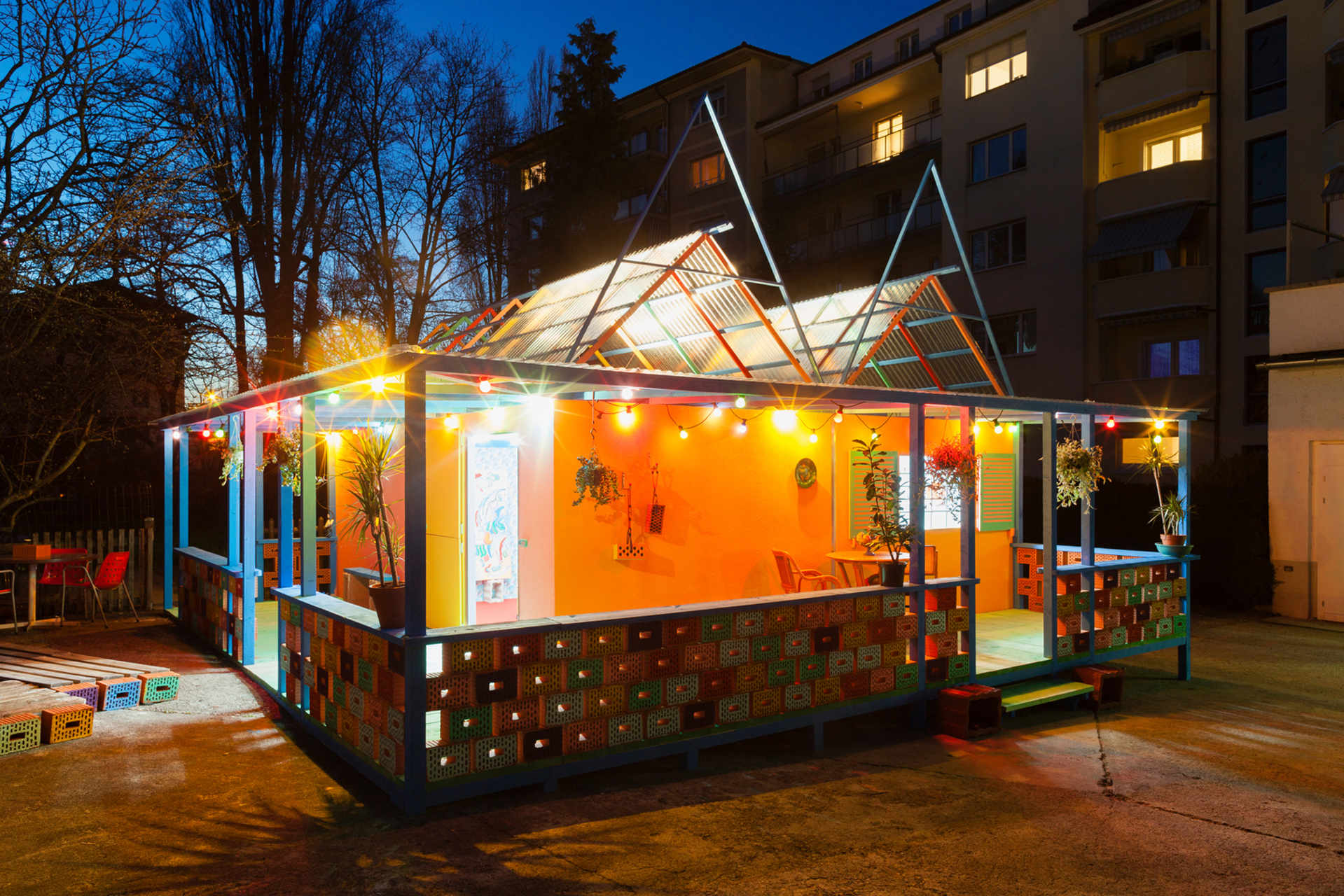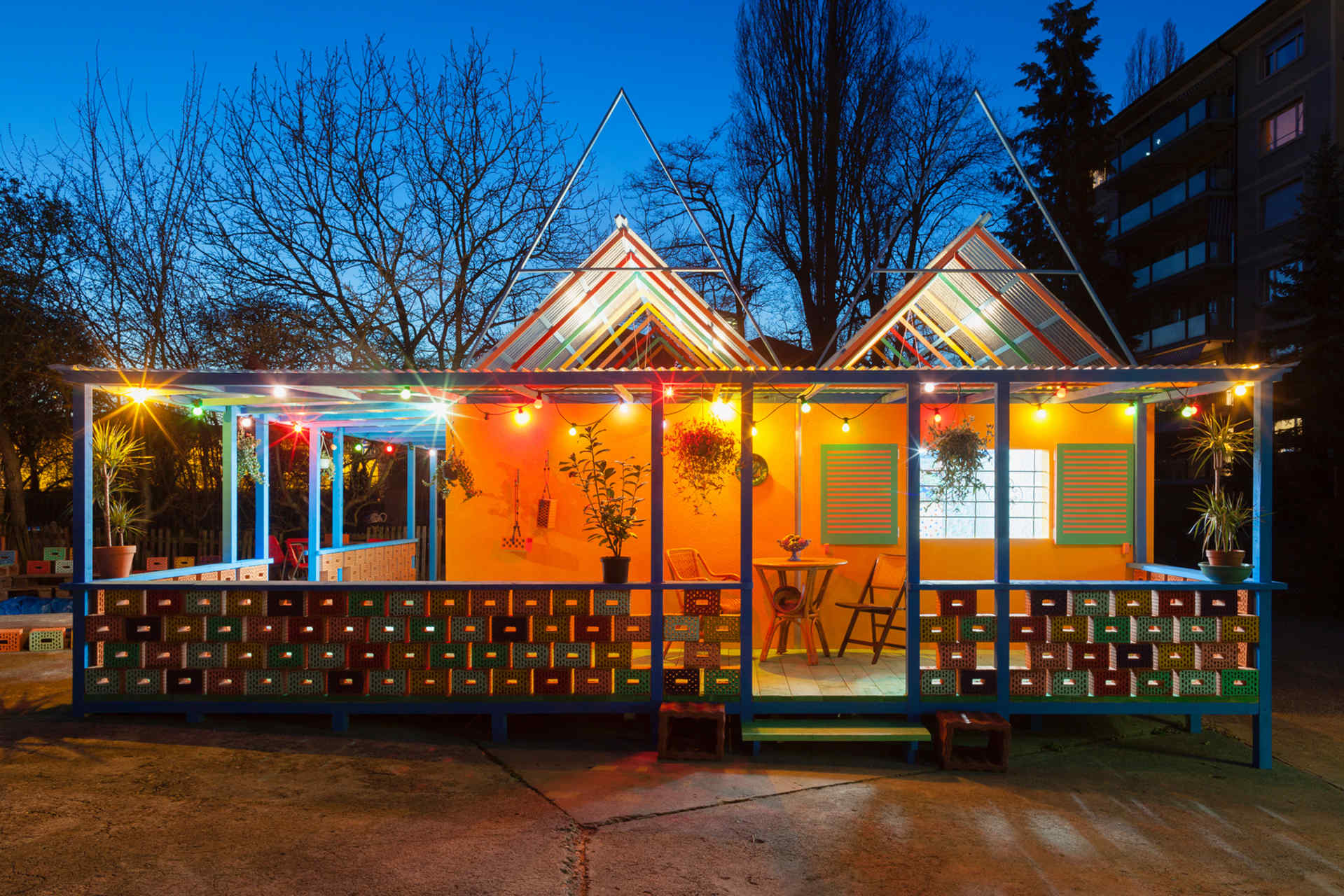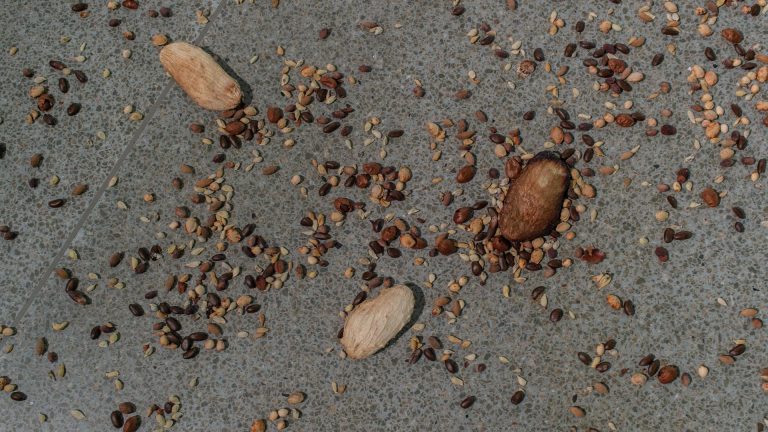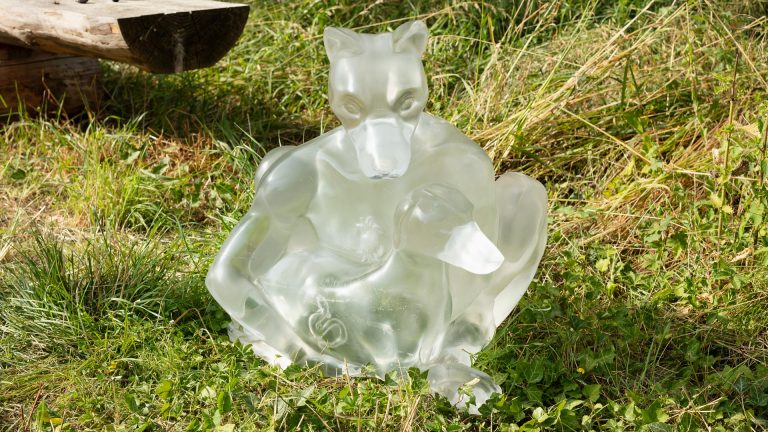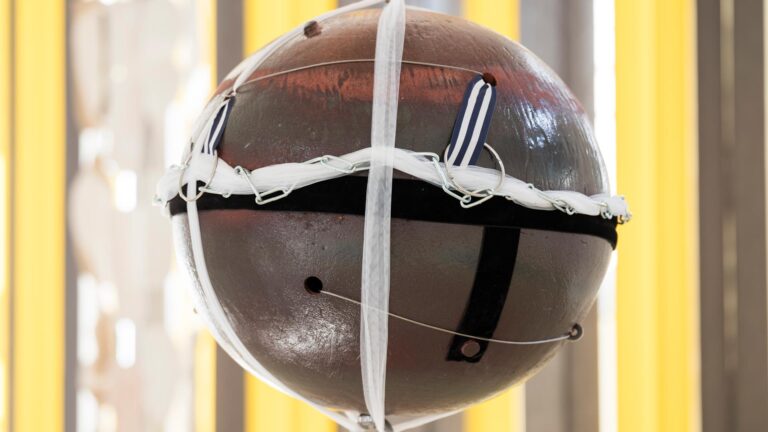Artist: Sol Calero
Exhibition title: EL BUEN VECINO
Venue: SALTS, Birsfelden, Switzerland
Date: April 5 – May 25, 2015
Photography: Gunnar Meier Photography ©2015, images courtesy of the artist and SALTS
EL BUEN VECINO is a new, site-specific body of work by Berlin-based, Venezuelan artist Sol Calero. The title of the show refers to the “Good Neighbor Policy,” a political strategy largely promoted by US President Roosevelt in the early 1930s designed to improve diplomatic relations between the US and Latin American countries. It was also intended to maintain cordial relationships among the Latin American community and US citizens living in the North American territory. Simultaneously implying the immediate and remote, more abstract proximity, the policy was an attempt to ensure an easy transit of petroleum and food between the two World Wars, as well as integrating the growing number of immigrants escaping the Central American dictatorships (the operations were ironically orchestrated by the US government itself). Though mostly concerned with the economic and political outcome, such policy managed to infiltrate every layer of both South and North American cultures.
For her show at SALTS, Calero turned the outdoor space into a colorful Caribbean house. With haphazard methods, she extended the existing garage boxes by opening a window, building a wooden porch, as well as a favela inspired roof structure. Additionally, she converted Karsten Födinger’s permanent installation into a provisional swimming pool. The inner space of the temporary habitat has gone through a strong transformation as well, where the usual domestic elements are combined with artworks the artist made specifically for this new body of work. Colourful “Fruit paintings” are hung on a pattern wallpaper of organic waves and abstract motives, a sculpture comprising multiple layers of colourful fabrics evokes a typical mambo dancer, while her newest works—a series of painted ceramic plates stand between a tribute to the 20th century modernist tradition of pottery ornamenting and the more popular tradition that consists of collecting souvenir plates and exhibiting them in the living room.
Activated for the first time on the night of the opening, the pavilion contributes to create a social situation and is not without reference to early Relational Aesthetics works, however Calero avoids the problematic open-endedness and patronizing approach many artworks from the 1990s suffered from. In fact, her Caribbean cabin is the stage of an authentic encounter with the “Exotic,” the audience is not expected to play any role. The environment confronts the viewer with an historical and cultural background with no further explanation. We all have our own idea of “the other”. More generally interested in the concept of “the neighbour,” Calero’s house functions as an hyperbole of hospitality, hence encouraging some of the nearby residents to stop-by and hang out on the porch.
With the aim to question our understanding of Latin American culture and its heritage, Calero appropriates the visual identity and extracts clichés from her own cultural background and subtly recontextualises them for the Western eye. Having mostly exhibited at European institutions, the artist investigates the nu- ances of definitions. What is the difference between an immigrant and an expat, between Latin-American, South American and European art? Popular or Pop Art? These are basic yet fundamental dialectics that her installation sets out to question. In fact, what the untrained Western eye would identify as “Latin American” art boils down to mistaking Gauguin for Picasso.
For EL BUEN VECINO Calero deftly integrates references to masters of Latin American modernism, motives borrowed from Mexican muralist Diego Rivera or color patterns inspired by Joaquín Torres-García. The playful hut becomes the stage of a strong political display, where the euro centric reading of (art) History can be written again. In fact, Calero’s endeavor targets misconceptions taking place on both sides of the Atlantic, reminding us that the game of influences is anything but unidirectional. While the artists of Modernismo took great inspiration from French Symbolism during their numerous trips to Europe, Josef Albers’s formalism was clearly influenced by pre-Columbian Art, and similar examples are countless.
Sol Calero was born in Caracas, Venezuela in 1982. She lives and works in Berlin, where she runs a project space alongside Christopher Kline, entitled Kinderhook & Caracas after their respective hometowns. Calero studied at Universidad Complutense de Madrid and Universidad de La Laguna, Tenerife. Her work has been included in solo and group exhibitions at Frieze London; Laura Bartlett Gallery, London; Museo Apparente, Naples; Mostyn, Llandudno; Frutta Gallery, Rome; Nogueras Blanchard, Barcelona; Gillmeier Rech, Berlin, and The Taut And Tame at Lüttgenmeijer, Berlin. Upcoming shows in 2015 include solo presentations at Studio Voltaire, London and David Dale Gallery, Glasgow.
We would like to thank artEDU and Pro Helvetia, the Swiss Arts Council, for their generous support.
The artist would like to particularly thank Abraham Medhanie and Stefan Mierecke for their help in building the house and swimming pool.




